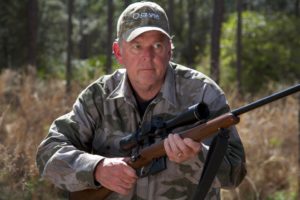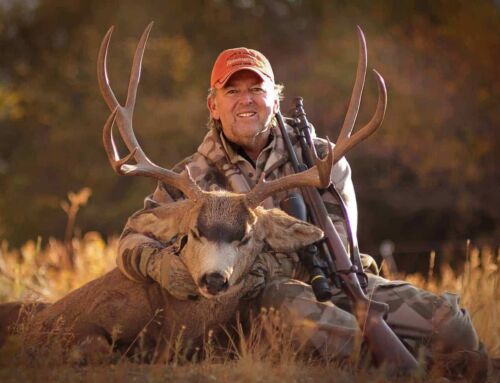 Been getting a lot of questions from new 20- to 40-somethings who want to try deer hunting, but don’t know where to start. First thing you need is a good rifle, scope and ammo. While bowhunting looks cool and it is, I encourage you to start out with a gun, shoot a few deer, get some experience and then graduate to archery.–MH
Been getting a lot of questions from new 20- to 40-somethings who want to try deer hunting, but don’t know where to start. First thing you need is a good rifle, scope and ammo. While bowhunting looks cool and it is, I encourage you to start out with a gun, shoot a few deer, get some experience and then graduate to archery.–MH
For a lot less money than many of you pay in rent each month, you can buy a brand-new, highly dependable and accurate rifle that will kill a deer cleanly one day this November—and one day 50 years from now. Do your research and choose wisely, and you can purchase the first and last deer rifle you’ll ever need.
Which Caliber?
Two old-school cartridges that every man and woman should consider for their first rifle are the relatively light-kicking and smooth-to-shoot .270 (No. 1 choice) and 7mm-08. If you’re a good-sized guy and can handle more recoil, check out the .308 or .30-06. There are dozens more classic and proven cartridges out there, but go with one of my top 5 and you’ll be happy.
In your research you’ll run across newer, sexier rounds, most notably the 6.5 Creedmoor. This cartridge was introduced in 2008 primarily for long-range target shooting, but it quickly (and curiously in my opinion) developed a rabid following with hunters, particularly the social media and chat room crowd. While I have not jumped on the 6.5 Creed bandwagon yet, some people have and are reporting good results with the flat-shooting, light-kicking round.
Features to Look For
Definitely go with a bolt-action rifle. Virtually all of today’s modern bolt guns are strong and dependable. While some rifles will shoot better than others right out of the box, any new bolt-action you purchase will be more than accurate enough for meat hunting. All you really need is a rifle/scope/ammo combo that will shoot a 3-shot group of bullets that measures 2 inches in diameter at 100 yards.
Barrels on today’s hunting rifles are generally 20 to 24 inches long; any of these lengths is fine, with minimal differences in accuracy and velocity. Most of today’s functional, affordable rifles have lightweight synthetic stocks that are tough, look good and shed rain.
For liability reasons, many new rifles come from the factory with trigger pulls approaching 5 pounds. You can teach yourself to shoot a heavy-trigger well with practice, but you will shoot a rifle with a crisp-breaking, 3½- to 4-pound trigger better. While adjusting the trigger weight on many new rifles is relatively easy, I strongly recommend you have an experienced gunsmith at your local shop do it for a small fee.
Here are 4 nice rifles that fit the criteria above. Any one of them will serve you well in the deer woods your first time out and for years and decades to come. There are many other good ones out there, so do your homework.
Savage Model 11/ 111
This rifle has a black synthetic stock and carbon steel, 22-inch barrel. The Savage AccuTrigger is a top feature. The rifle comes in either right- or left-hand models. It comes from the factory with a Bushnell 3-9X 40mm riflescope mounted on top and bore-sighted. Chambered for a wide variety of deer hunting cartridges, from .243 to 30-06. MSRP $549.
Ruger American Standard
This rifle has a one-piece, 3-lug bolt, a well-designed composite stock, a free-floated 22-inch barrel and an adjustable trigger. The Ruger American was one of the first specially designed and no-frills deer-hunting rifles to hit the market a few years ago, and it has gained a reputation as a durable, dependable and accurate shooter. Seven popular whitetail calibers. MSRP $559.
Franchi Momentum Bolt-Action
The composite stock combines unique raised curves and crisp checkering for a good look and feel. It features a crisp trigger, 2-position safety and a free-floated, 24-inch hammer-forged barrel. Chambered for .243, .308 and 6.5 Creedmoor. A sharp-looking Elite model (6.5 Creed) with a Realtree Escape stock and a one-piece Picatinny Rail for scope mounting is available. Rifles start at MSRP $609.
CZ 557 Eclipse
I carried this lightweight, well-balanced rifle in .30-06 for 3 months last fall and shot 4 whitetail bucks with it. Push-feed action and cold hammer-forged barrel (20 inches) are dependable and accurate. Choose 6.5 Creedmoor, .308 or .30-06. While the Model 557 has been discontinued, look for one on the used rack of rifles at gun shops. This is one of the best-fitting and most accurate rifles I have hunted with in the past 40 years!
Scope for your Rifle
A good, all-purpose scope for your rifle is either a variable 2.5-10X (X=power of magnification) model or 3-9X. You surely want a standard duplex crosshair reticle. My rule of thumb is that your scope should cost as much or more than the rifle you purchase. The better quality of the scope on your gun, the better you’ll see and distinguish deer in all light conditions, and the more accurately you’ll shoot. I use Trijicon scopes exclusively, and their great and affordable deer-hunting model, the 3X-9X Huron, is one of my favorites.
Ammo for Hunting
This is the hard part, and the easy part. Hard, because we are still in the throes of an ammunition shortage, although it is getting better. Easy, because todays’ excellent standard factory loads with proven bullet designs are all you need to kill a whitetail cleanly.
Once you’ve purchased a rifle, buy a minimum of two 20-round boxes of standard and relatively inexpensive loads of matching caliber. Good choices are Remington Express with controlled-expansion Core-Lokt bullets; Hornady American Whitetail with Interlock bullets; and Federal Power-Shok with lead-core jacketed soft-point bullets.
Ammo prices are all over the place these days, but expect to pay $30 or more a box. You could pay twice as much per box for premium loads from these manufacturers and others, but take my word, you don’t need it. I have shot dozens of bucks with standard loads over the years, and they perform wonderfully on deer.
Sight-In and Shooting Tips
You can mount a scope on your new rifle at home—it’s not rocket science and there are lots of how-to videos on YouTube—but I strongly suggest you have a gunsmith at your local gun shop do it, especially for your first rifle. The number one factor in your rifle’s accuracy will be how the scope is attached to the gun with scope base mounts and rings. A solid, well-mounted scope will enable you to shoot accurately, and the point of impact of your bullets will not change over time. I’ve had the same scopes mounted on some of my rifles for 10 years and they still shoot straight. Conversely, you’ll never get great accuracy with a scope that is not mounted properly and misaligned.
Once the scope is mounted on the rifle, have the shop guy “bore sight” it, which means he’ll look down through the barrel and then up through the scope, eyeball where the crosshair should go on a target’s bull’s-eye and then make the initial scope settings. This should get you close to zero, but you still must go to a shooting range or safe place on your land with a good backstop and fire rounds at a target to fine-tune things.
For your sighting-in session, make sure you have a solid place to sit and rest your rifle on sandbags, or lay flat and shoot from the prone position with the rifle pinned on bags or a benchrest bipod. Never try to sight-in when you are unsteady or uncomfortable, sitting awkwardly with your rifle wobbling around. You’ll never shoot accurately or consistently that way. Not to mention your confidence is shattered when shots from an unsteady rifle hit all over a target. Always make sure you and the rifle are super steady and safe before each shot.
Fire 3 shots from a good rest and you should see a cluster pattern of where the bullets are hitting, or a “group.” Then move the scope’s elevation knob (top of the scope) to move the crosshair, and the impact of your bullets, up or down toward the target’s bull’s-eye. To move shots left or right, use the windage knob on the side of the scope. This is very easy to do.
Once your bullets are cutting the bull’s-eye and grouping 2 inches or closer together, click the top elevation knob to move your bullets hit 1-inch high over the bull’s-eye 100 yards. That way you can plant the scope’s crosshair on the front shoulder of a deer (always aim for this relatively large lung/heart area) that is standing anywhere from 50 to 200 yards away. Hold steady, press the trigger fire and drop the animal cleanly without worrying about how many inches your bullet might drop in elevation on a longer shot.
My best advice: Hold your shots at deer to 200 yards or less, always pin the crosshair smack in the middle of deer’s shoulder blade, take a half-breath and squeeze the trigger. You’ll get him, or the doe, every time.
Fire more practice shots at targets until you start to get a good feel for the rifle and its recoil, and the trigger pull. The more days you shoot before the season opens this November, the better you will shoot in the woods, and the more confident you’ll be of achieving what we all want—one shot kills.






